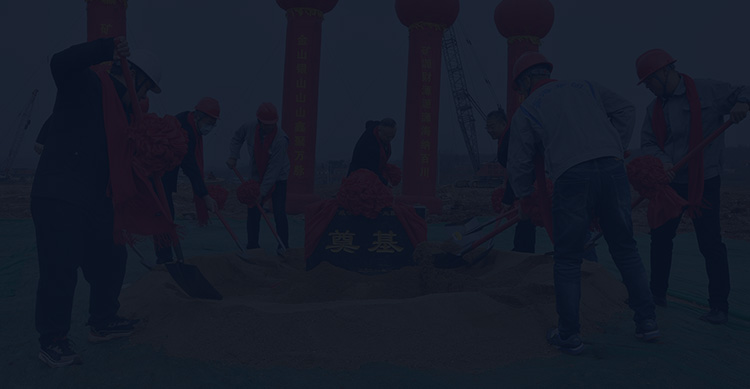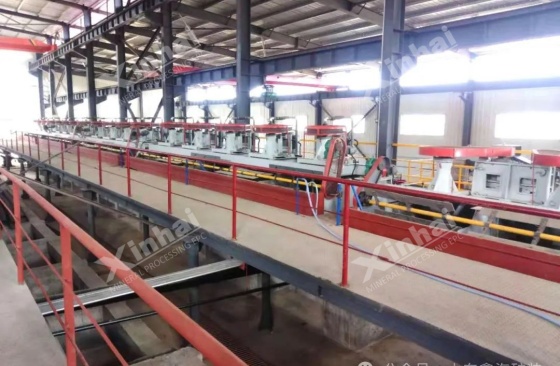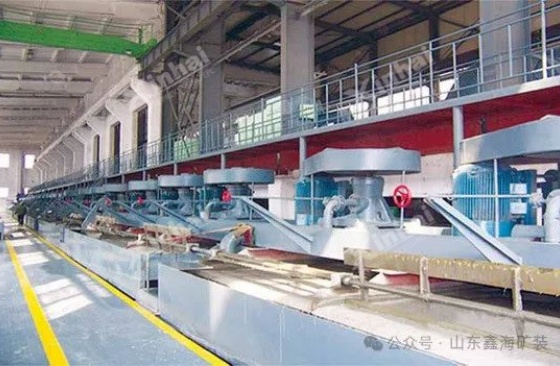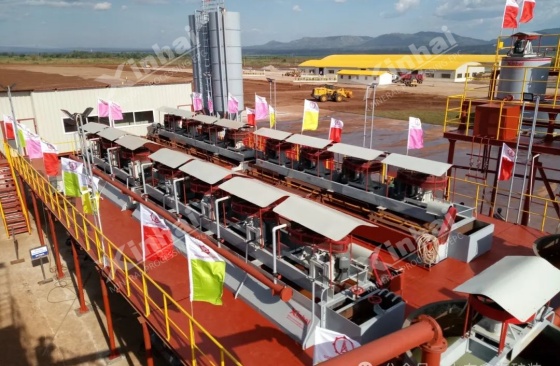
Copper oxide is an important copper resource, with a diverse range of minerals such as malachite, azurite, cuprite, alum minerals, and chrysocolla. These minerals are typically formed through the slow oxidation and metamorphism of copper sulfides. However, due to its loose structure, uneven particle size distribution, high water and mud content, and multiple associated components, the extraction of copper oxide is a complicated process.
To improve the utilization rate of mineral resources, the flotation method is commonly used in mineral processing plants to treat copper oxide ores. When flotation alone cannot meet processing requirements, it is supplemented by chemical beneficiation. Depending on the flotation reagents used, common copper oxide flotation methods include sulfide flotation, fatty acid flotation, amine flotation, emulsion flotation, and chelating agent–neutral oil flotation.

Sulfide flotation is used to process oxidized copper ores and mixed copper ores. It can be divided into two categories: direct sulfide flotation and hydrothermal sulfide flotation.
(1) Direct Sulfide Flotation
First, the copper oxide ore is ground, and then sulfiding agents (such as sodium sulfide, hydrogen sulfide, or calcium sulfide) are added to the pulp to carry out a sulfidation reaction under appropriate pH conditions. Since sulfiding agents are easily oxidized and have a short action time, they should be added gradually in stages. The addition of agents such as ammonium sulfate and aluminum sulfate can promote the sulfidation of oxidized minerals, thereby improving the flotation performance.
(2) Hydrothermal Sulfide Flotation
The hydrothermal sulfidation flotation method is an extension and enhancement of conventional sulfidation flotation. Its core lies in strengthening the pre-sulfidation process of the ore under hot pressure conditions. In this process, sulfur and copper oxide fully react chemically under high temperature and high pressure to generate stable and easily recoverable artificial copper sulfide minerals. Flotation recovery is then carried out in warm water.
This method features a simple process, high recovery rate, and effective mitigation of the adverse effects of fine mud on flotation. However, it also has significant drawbacks, including extremely high temperature requirements, high fuel consumption, and long sulfidation times.

The copper oxide fatty acid flotation method, also known as the direct flotation method, is primarily suitable for non-carbonate copper oxide minerals in gangue. This method uses fatty acids and their soaps as collectors for flotation. During the flotation process, gangue inhibitors (such as water glass and phosphate) and pulp adjusters (such as sodium carbonate) are typically added to optimize the flotation environment.
Fatty acid collectors exhibit strong collecting ability for minerals such as malachite and azurite, particularly those with longer hydrocarbon chains, which show even greater collecting power. However, this method has poor selectivity and is easily affected by temperature due to the high freezing points of fatty acids. Higher fatty acids, in particular, are difficult to disperse and dissolve in the pulp. To improve the flotation performance, mixed fatty acids are commonly used instead of single fatty acids.
If the gangue contains large amounts of iron, manganese, or other minerals, the mineral processing indicators will deteriorate. In addition, the presence of sludge can cause fatty acids to lose effectiveness, thereby negatively impacting the flotation results.

Amine flotation, also known as cationic collector flotation, is a commonly used beneficiation method for non-ferrous metal oxide ores. It is particularly effective for minerals such as azurite, malachite, and chlorate in oxidized copper ores, and can also be applied to the separation of lead and zinc minerals. This process mainly utilizes amine collectors, which offer strong collecting ability, fast flotation speed, and high recovery rates, making them highly effective for floating malachite and azurite.
Since amine reagents can also collect some gangue minerals, pre-desliming treatment is often necessary before flotation to minimize gangue interference. However, for oxidized copper ores with high mud content, pre-desliming may result in copper losses. Therefore, the application of this method requires the selection of suitable gangue inhibitors, such as seaweed powder, lignin sulfonate (or cellulose lignin sulfonate), and polyacrylic acid.
In addition, to improve the separation efficiency, it is generally recommended to pre-sulfide the ore or add an appropriate amount of non-ionic additives before using amine collectors. It should be noted that although this method offers high flotation efficiency, it also presents challenges: the flotation foam is difficult to dissipate, reagents are expensive, and the process is sensitive to slime content. As such, sufficient mineral processing tests should be conducted prior to practical application to determine the process's feasibility.

The emulsion flotation method primarily involves sulfidizing copper oxide minerals to render their surfaces lipophilic. Subsequently, organic copper complexing agents—such as benzotriazole, tolyltriazole, mercaptobenzothiazole, diphenylguanidine, and others—are added to further stabilize the lipophilic mineral surfaces. Non-polar oil emulsions (e.g., gasoline, kerosene, diesel) are then used to coat the mineral surfaces, creating a highly hydrophobic floating state that enhances adhesion between the mineral particles and air bubbles, thereby achieving effective separation.
In addition, to improve selectivity, selective inhibitors such as acrylic acid polymers and sodium silicate are introduced to suppress the flotation of gangue minerals and enhance the concentrate grade.
Chelating agent flotation and chelating agent-neutral oil flotation are processes that utilize chelating agents, either alone or combined with neutral oils, to form a collector system for the flotation of oxidized copper ores. These methods are particularly effective for difficult-to-float oxidized copper minerals, such as chrysocolla. They offer advantages such as high selectivity, strong collecting ability, excellent separation performance, and significantly reduced reagent consumption.
Chelating agents not only serve as collectors and activators during flotation but also selectively react with copper ions on the mineral surfaces to form lipophilic and hydrophobic chelates. Neutral oils are then used to float the chelates, achieving rapid flotation with a high enrichment rate while greatly reducing sodium sulfide consumption.
Due to the complexity of oxidized copper ore flotation—encompassing collector selection, pulp pH control, activator application, and reagent combination strategies—it is strongly recommended to conduct mineral dressing tests beforehand. Through comprehensive analysis and testing, process parameters can be optimized to maximize the efficient recovery of oxidized copper ores, thereby improving resource utilization and economic returns.
To find out more about our products and solutions, please fill out the form below and one of our experts will get back to you shortly.